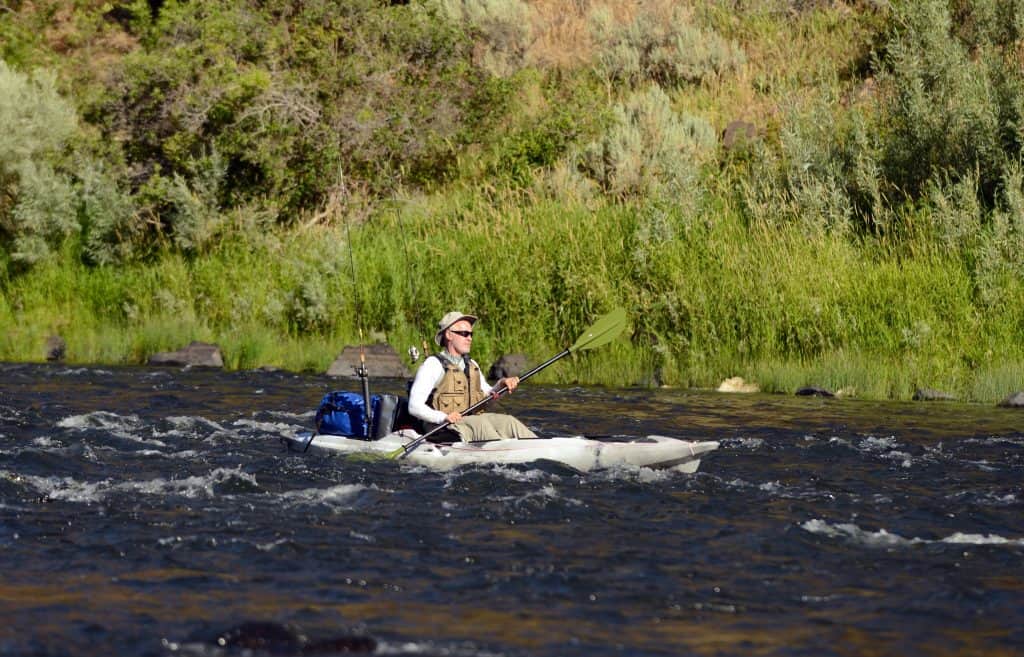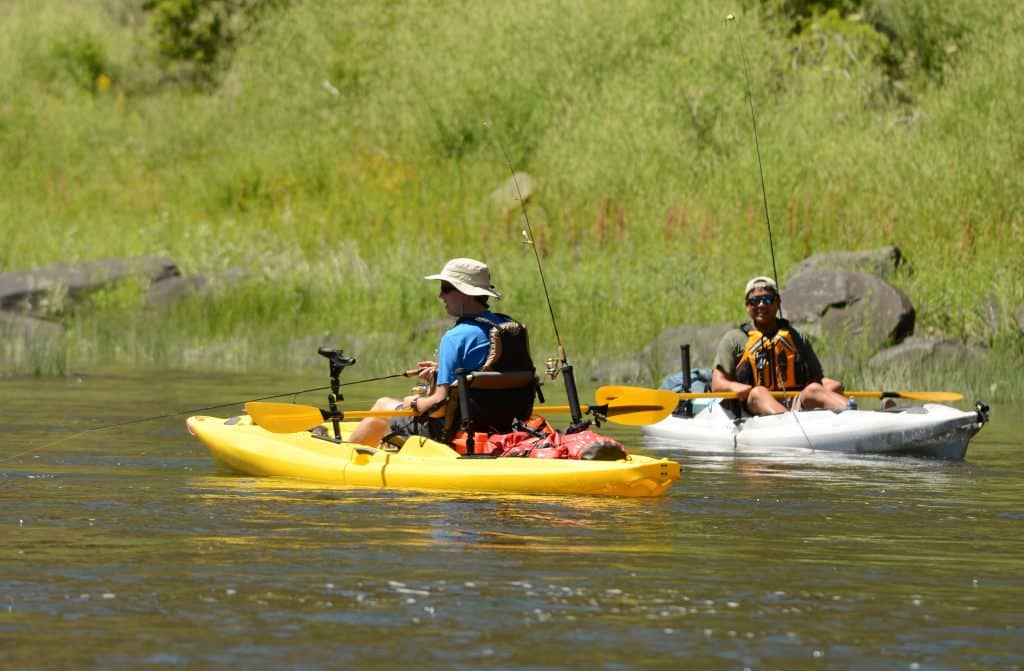
If you are someone who has concerns about your fishing kayak flipping over, I am here to help. I have researched the topic to find the most beneficial information regarding fishing kayaks.
Do fishing kayaks flip over sometimes? With a fishing kayak, there is always a possibility of flipping over. The kayak is designed to be wide and stable, yet slower than sea kayaks. However, with the use of learnable techniques, it becomes easier to not flip.
If you have a desire to learn how to resist the flipping kayak situation, I will descibe with detail some ways to stay on your kayak.
How to Avoid Flipping Over Your Fishing Kayak
No matter what you do, there will always be a chance that your kayak could flip over. There is never a 100% guarentee that your kayak will stay floating straight.
However, because flipping over is so undesirable, I have found a few things you can do to help you stay floating. To stop your kayak from flipping over:
- Evenly distribute your gear. What is inside your kayak matters just as much as what is on the outside. Weight should be even from front to back and from side to side of your kayak. A key way to know is when you are sitting up straight in your kayak, the kayak should be perfectly level.
- Learn the low brace stroke. This stroke is used when your kayak is dramatically tilted to one side. Brace your legs in the kayak. Place your paddle horizontal to the deck and parallel to the water. Tip the kayak sideways until your paddle reaches the water. Then, move your hips toward the blade to keep the yak straight on the water.
- Learn the high brace stroke. Put your paddle shoulder height with your elbows underneath it. The front of the paddle should be parallel to the water. Move your weight to one side until the kayak starts tipping. When the blade touches the water, move your hips towards the blade.
- Check the weather. Often times, the weather is a cause of your kayak tipping. Wind and waves are the things to watch out for. Even if it is sunny outside, it may not be the best weather for your kayak.
- Paddle into the waves. Many times while kayaking, people paddle around the waves. Instead, a kayak is more stable when you paddle into the waves. When a wave hits the side of a kayak, it is more likely to flip.
When you feel that you are about to tip over, use a high or low brace stroke. Both of these strokes are designed to use when your kayak is significantly titled to one side. These will help you stay level on the water.
What Do I Do if I Flip?
The most easy solution for when you flip over your fishing kayak is to get back into the kayak. This may seem intimidating when you are in the water. However, if you follow the list of steps, you should be able to get back into your kayak safely.
To get back into your kayak:
- Make sure that your kayak is right side up. If it is not, push it over onto the right side.
- If you are with another person, get them to stabilize the kayak. If you are alone, you should still be fine, but it is simpler with another person.
- Come to the back of the kayak and pull your chest on top of the kayak. Start with your legs behind you and kick as if you were hopping out of a swimming pool.
- Move your body to the cockpit with your arms.
- Sit up, straddling the kayak.
- Swing your legs through the water until you are able to pull your feet on top.
These steps will help you to come back on top of your kayak. It is best to practice this beforehand. You are much more likely to have stress and panic while you have flipped on accident.
By practising this technique beforehand, you will be able to remember with less fear. So, empty out your fishing kayak, put on a nice swimsuit, flip your kayak, and practice, practice, practice.
Kayaking Safety Tips:

Although most trips on a kayak end up well, it is important to remember the safety of the kayak. We must watch out for certain things before and while we are on our trip.
Some important things to remember for kayak safety are:
- Plan your tip within your capabilities. Do not go overboard.
- Look out for any weather or local hazards. If there are any warnings, that is probably a good sign, you should stay in.
- Bring your essential safety gear with you.
- Dress as if you were about to go in the water. Do not assume you will be dry throughout the whole trip.
- Don’t go alone. Although it is done often, the safer route is to go with a partner or a group. This will ensure a helping hand if you flip over.
- Find calm, flat water. Often smaller bodies of water, such as a lake or pond are safer because they are calmer.
- If possible, go into a section where power boats are prohibited. If not, try to steer away from them.
- Stay as close to the shoreline as possible.
These tips for kayaking will help you to avoid flipping over. General safety will make your kayaking experience more enjoyable. Remember that flipping over your kayak is not the only danger possible.
Sit On Top vs. Sit Inside Kayaks:
Both sit on and sit inside kayaks are commonly used. However, with a fear of flipping over. Sit on top kayaks seem to be the safest choice, with more stability and easier solutions to flipping.
| Sit on Top Kayaks | Both | Sit Inside Kayaks |
| Freedom to move in and out of water. | Avaliable as singles or doubles. | Enclosed. |
| Flipping recovery is less complicated. | Can be hard shelled or inflatable. | Contains the cockpit, where you sit. |
| Easy to get in and out of. | Have seats and foot support. | Shelter lower body from the wind. |
| Have small holes to allow water to drain through them. | Contain parts such as, the deck, hull, stern, etc. | Flipping recovery is more complica |
Related Questions:
Is kayak fishing dangerous? Kayak fishing is a very fun way to fish. However, there are some dangers associated with it. Being cautious of dangerous animals and your surrounding is important. It is safer when you are aware of your surroundings.
Is a kayak easier to flip over than a canoe? A kayak is more narrow than a canoe. The canoe is wider and therefore, has less of a chance of flipping over. However, both the kayak and canoe can flip over. The kayak is still safe, but not as safe as the canoe.
